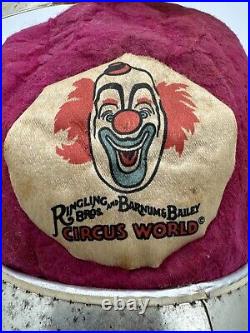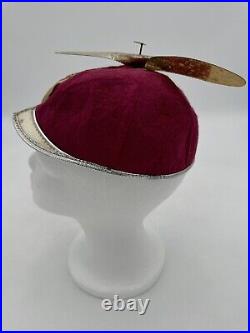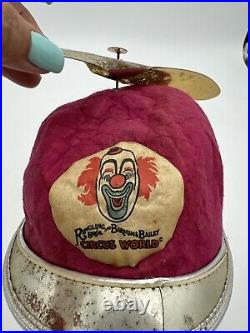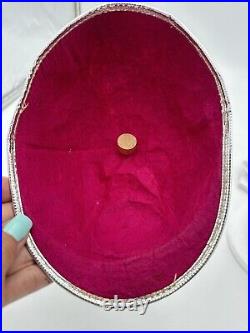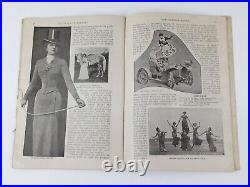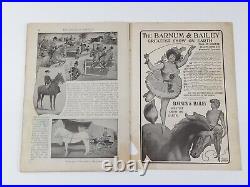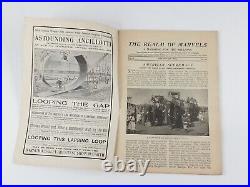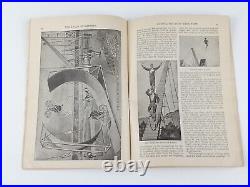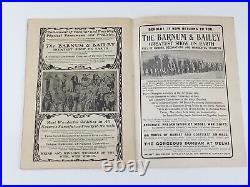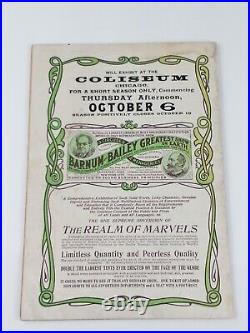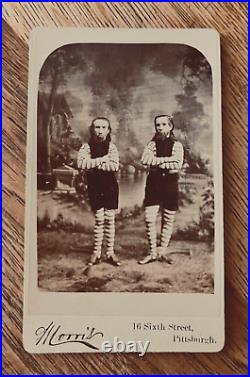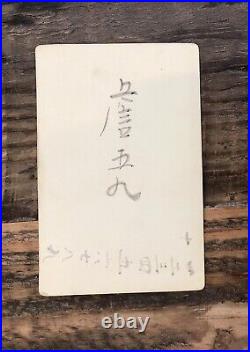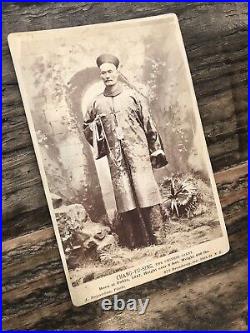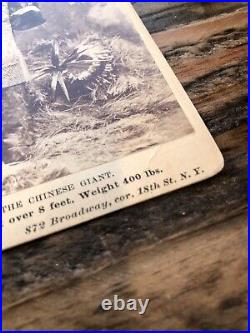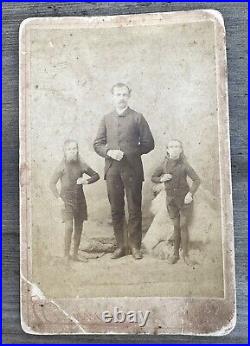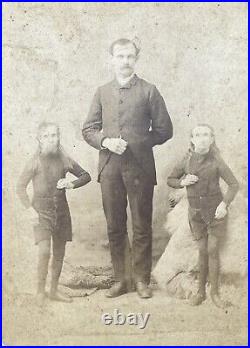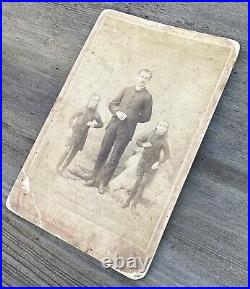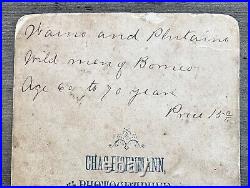
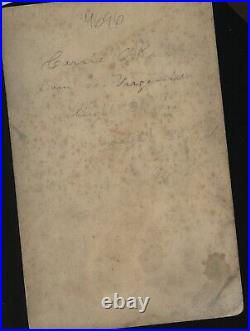

Original cabinet card of Carrie Akers and her manager I believe.. Maybe her husband, billed as a “Midget Fat Lady”, and also, debatably, as’The Warthog. Akers was known as “Quarrelsome Carrie” in the sideshow community because of her volcanic temper. Handwriting on reverse has says: Carrie Akers Born in Virginia height 31 in weight 309 lbs age 27. I’ve once seen a variant of this rare cabinet card showing the man looking through the window at her. This cabinet card is 6.5″ x 4.25″ with blank back (other than the writing). It’s in very good antique condition with aging, staining and foxing, primarily on the back. If the condition of the back is a concern let me know. Here is some info found online: Every once in awhile, a Human Marvel comes along who is a multiple attraction… Few persons have actually encapsulated the characteristics of two separate traditional human marvel displays into one presentation. Carrie Akers was a double feature in the world of sideshow – she was both a midget and a Fat Lady. While the date of her birth is not certain, Carrie did hail from Virginian. She weighed a purported 309 pounds and stood only 34 inches tall. These traits qualified her as both a midget and a Fat Lady, thus a “double feature”. Unlike the usually jolly copious performers of her time Carrie, as evident in many of her cabinet cards, was considered a very sour and bitter person. So poor was her reputation that she was eventually shunned from the sideshow community and she had a serious falling out with P. Barnum – serious enough for the showman to drop the potentially profitable Carrie from his roster of performers. Furthermore, her unfortunate epithet of’The Warthog’ was given to her not only because of her dimensions but also due to this hot temper and extremely rude reputation. T exist a few rumors that Carrie was also becoming a legitimate bearded lady, whether via biological or gaffed means. This would have made her a triple feature in sideshow – however it appears that she retired from show business shortly after her problems with Barnum. Most of her cabinet photos date between 1888 and 1889 and few photos of her exist today. This indicates that her career was not a successful one, likely due to her gruff personality. Not much else is known about Carrie following her short career. However, if she had gotten a few tattoos she could very well have been a complete sideshow all on her own. (The Human Marvels website).


